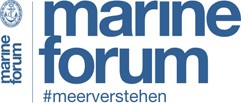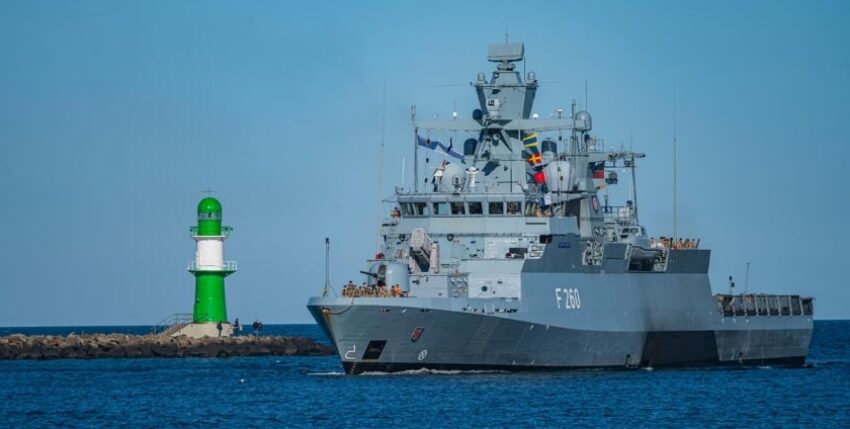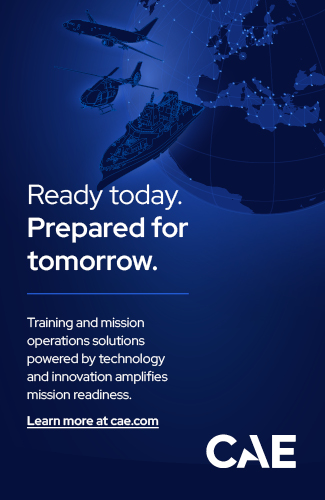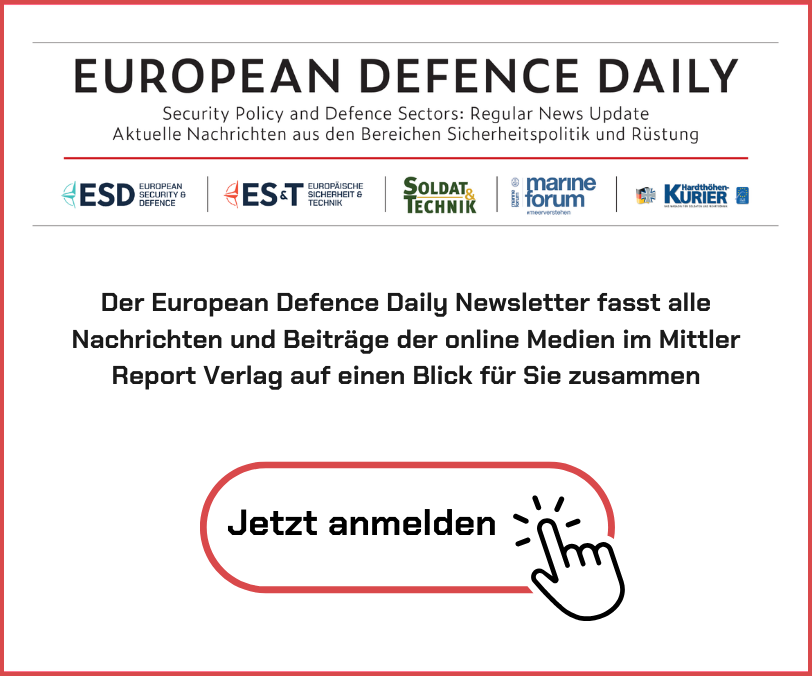Since the beginning of the Russian invasion of Ukraine, the German Navy has once again focussed on the Baltic Sea. The crews of the 1st Corvette Squadron are well equipped to defend against the various threats.
The corvettes of the German Navy have been required for missions in the Mediterranean in recent years - but they were not designed for this purpose. The demand for units was already higher during the planning phase than the number of units available today. Despite this, the second batch is still waiting in the wings.
How is the association doing under the current circumstances? Time to head off to the summery beauty of Warnemünde once again to capture the mood. We know each other, the welcome from the commander, Frigate Captain Marc T. Tippnerand the Head of the Corvette Operations and Training Centre, Frigate Captain Thorsten VöglerThe atmosphere is friendly and friendly and the atmosphere is confidentially good.
The commander immediately comes to the core question of what makes up the 1st Corvette Squadron:
"We are the German Navy's combat unit specialising in surface warfare in marginal seas."
He refers to the land-based heavy sea-target missile RBS 15 Mk 3 from Saabthe ability to lay sea mines, conduct reconnaissance and defend against air and surface threats.
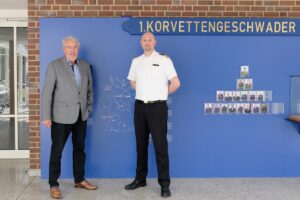
Although the airborne reconnaissance and identification project in the maritime operational area has not yet been realised, there is a new approach and the integration of swarm-capable surface drones is also being sought with the Future Combat Surface System. The Future Combat Surface System is intended to complement the existing surface units in a networked manner, which is why the squadron is supporting the development and deployment of autonomous systems as part of operational experimentation. "This makes a corvette a flexible naval warfare asset across the entire intensity spectrum," adds Tippner. Together with the staff, the operations and training centre and the system support group, this is a "strong team that may contribute to Germany's security worldwide".
Worldwide, really? So far it's only been the Mediterranean! The commander is not deterred. Indeed, for many years, contributions have been made to defence diplomacy, national risk prevention and international crisis management, particularly at Unifil. Most recently, the corvette LUDWIGSHAFEN ON THE RHINE returned from the Lebanese coast shortly before Christmas, another mission that was particularly challenging for the crew. "The successful defence against an attack with an armed drone on 17 October 2024 showed that our crews are well trained for their missions and are proficient in their weapon system."
And further: "Our core mission, however, is deterrence and defence on the northern flank and now requires us to step up our efforts in the Baltic Sea."
Back to the sea on our doorstep, isn't that also a relief? Tippner emphasises that we are proud of the Unifil deployments we have carried out and that he is not passing judgement on their relevance. For him, operational capability is the core, both for the permanent presence in the Baltic Sea and off the Levant. "However, the fact that we are focussing on the Baltic Sea in the current security situation gives us a clear tactical advantage in the event of war. Since the beginning of the year, we have been operating with up to three corvettes in the Baltic Sea at the same time, thereby contributing to a close-knit situational picture and the necessary spatial knowledge in a challenging geography and ensuring our ability to respond to hybrid threats."
At the same time, a large number of manoeuvres and exercises are used to train crews and intensify cooperation with other naval forces. This strengthens the alliance and contributes to credible deterrence. And how do the crews, or rather the whole team, see it? Tippner was expecting the question, leans back with a smile and states, not without pride: "This has done something to people; operating on their own doorstep is seen by many as a very meaningful service." Everyone is aware of the threat to the critical infrastructure in the Baltic Sea. They are also aware that Russian propaganda is spreading a distorted image of the Germans and their navy. Countering this with a visible presence is a mission that is understood by the crews and to which they are firmly committed. The squadron motto "Let's do it" is apt, he says. "And because people fight, not ships, we rely on the long-term loyalty of motivated people to our squadron." This is why the attractiveness of the service is important to him, he emphasises. In addition to the best possible compatibility with family concerns and the availability of functional units, he believes this also includes sound training that opens up prospects.
When asked how the new training facility from Rheinmetall is proving itself, both officers are very satisfied. This has helped the unit to progress, both in terms of training efficiency and team building. "We have to give the crews the certainty that they are up to the challenges ahead."
Did changes have to be made to deal with the current security situation? Commander Tippner goes on to say that a whole raft of measures have been initiated. "We have revised our squadron structure and are currently evaluating a new crew structure that is geared towards short-term recoverability and long-term experience building. We are also looking closely at training under wartime conditions." However, he believes that cooperation within the organisation is particularly important: "Only together are we strong."
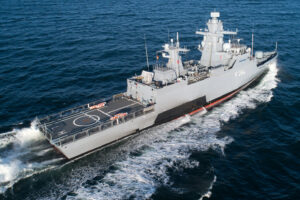
Speaking of working together: what about the next generation? Tippner mentions how important the navy is as an employer in the region and that he is also confident about the future with regard to the new military service. Of course, the navy is also affected by the shortage of skilled labour and must therefore be perceived as a good employer.
What is the role of the commander today? Tippner quotes from the regulation: "The commander is responsible for the leadership and operational readiness of the unit, the level of training, the discipline and fulfilment of duty of the subordinates, the welfare of the crew and for the legality and expediency of his orders." The commander is convinced that there is no other assignment that involves a comparable level of responsibility. "It requires strength of character and spirit as well as skills based on targeted training and in-depth experience!" This takes time; it takes an average of six years to become a commander.
Finally, the burning question of how the new corvettes of the second batch are coming in. Tippner responded calmly that they were doing their job in good co-operation with the shipyard. The preparation of the crews is a high priority, and there is light at the end of the tunnel: "The EMDEN is already sailing under the federal service flag, and we expect all five units of the second batch to be at sea next year." It will be interesting to see. Tippner will no longer be able to experience this milestone as commander; he will hand over his command to frigate captain Stephan Lukaszyk on 24 September.
Holger Schlüter
